The secret to the perfect dark sky holiday
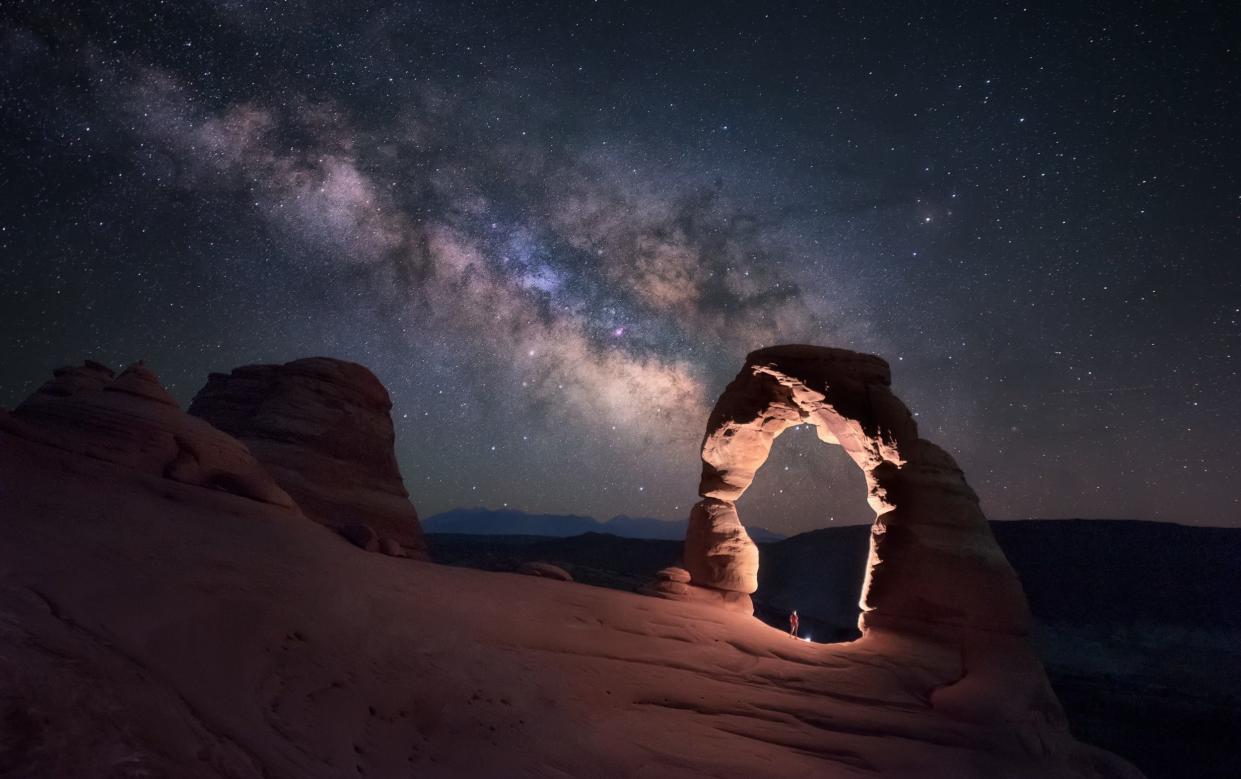
Since the dawn of humankind, people have stood in the dark and looked up. The bright planets, watchful Moon and sparkling stars have given inspiration, hope, perspective and spiritual meaning to humans since we were able to comprehend them. The night sky has inspired some of our greatest works of art, music and literature, while creatures and plants have evolved in sync with the day-night cycle, responding to natural cues in the cosmos for migration, mating and pollination.
Humans also need access to natural nighttime. When darkness falls, our bodies release melatonin, a hormone responsible for drifting us off to dreamland and spending time under the stars is proven to have calming effects on our nervous systems.
But in 2023, a 12-year study published in the journal Science found that light pollution is growing at an astonishing rate of 10 per cent annually. With this rise, dark sky tourism (travelling with the express purpose of spending time in natural darkness or enjoying the starry sky) has become ever more popular. And as more than half of people worldwide live in light-polluted urban areas, it is understandable that we are seeking a deeper reconnection with the natural nighttime environment.
Destinations that promise deep dark nights have begun to preserve these ecosystems by creating International Dark Sky Places (IDSP) – parks, reserves and sanctuaries certified by the US-based non-profit DarkSky International for their nighttime protections and non-pollutive lighting. Spending time admiring a starry sky, going on a nocturnal wildlife safari, taking an evening hike, attending a dark sky festival or visiting ancient sites aligned with the night sky – like megalithic stone circles – are all popular forms of dark sky tourism. Here’s our guide to booking the ultimate dark sky holiday and reconnecting with the cosmos.
Where to go
There are a few star-studded destinations in the world where dark skies are assured: the south-west US, Chile, New Zealand, Namibia, and Britain and Ireland. Each offers the opportunity to relax beneath the rotating heavens and contemplate the cosmos surrounded by a cosy blanket of natural darkness.
As dark sky travel is a new form of tourism, very few tour operators offer all-inclusive, package tours. This means that your best option is often a self-planned trip, focussing on local astronomy and stargazing tours upon arrival.
Skip ahead:
South-west US
The south-west US – namely the states of Utah, Colorado, Arizona and New Mexico – are rich in starry skies. The region’s dry climate and high elevation make for the perfect conditions for night-sky viewing. The first-ever IDSP – the International Dark Sky Community of Flagstaff, Arizona – was certified in 2001 and DarkSky International has its headquarters in Tucson, Arizona. Meanwhile, Utah and Colorado compete for the most IDSPs per state, with stargazing in deserts and mountain landscapes such as Arches National Park. Utah also boasts the first-ever DarkSky-certified resort, Under Canvas Lake Powell.
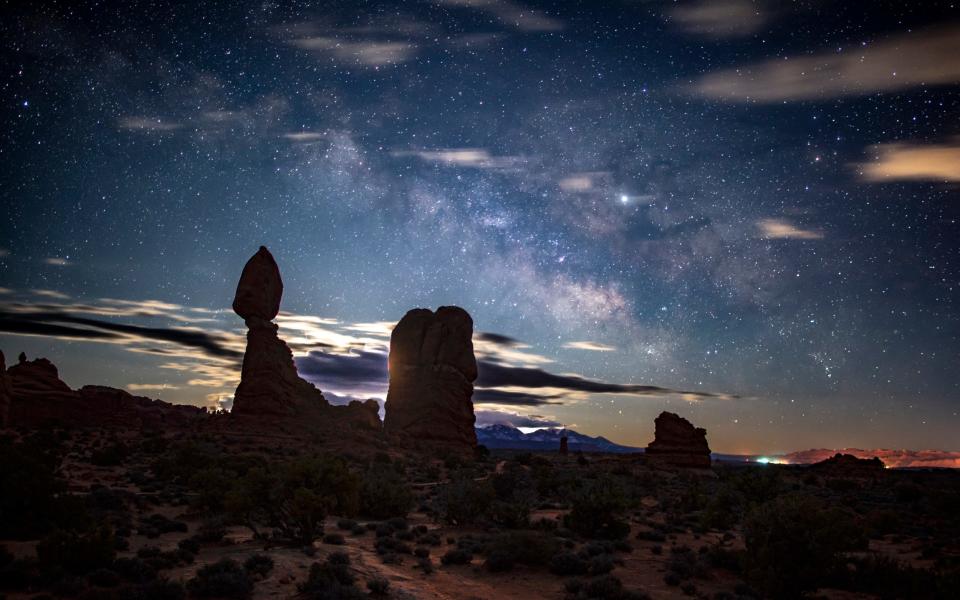
How to get there
Fly from the UK to Denver, Colorado or Phoenix, Arizona. You’ll need a hire car to reach the dark sky parks. Las Vegas is also handy for reaching the dark sky park at Zion National Park. If you want to tick off bucket list experiences, you could add a luxury train journey aboard the Rocky Mountaineer from Denver to the Dark-Sky Parks in Moab, Utah (rockymountaineer.com; from £1,369).
When to go
Stargazing tours and star parties are held in the national parks in summer but deep winter is great for crowd-free access to the dark nights.
When to book
Summer books up quickly in the national parks and on the Rocky Mountaineer. Book early in the year to avoid disappointment. For a last-minute trip, head to less-visited New Mexico, which is home to nine IDSPs, including the ancient Native American settlement at Chaco Canyon.
How much does it cost?
When it comes to visiting the south-west US, the biggest expenses are airfare, car hire and petrol. Permits to enter the national parks are charged per vehicle; to avoid racking up fees, purchase an annual US National Park interagency pass, which gives access to all of the federal parks and monuments for a flat fee (nps.gov; £63).
The best package
Check each national park’s website for details on its official dark sky events, festivals and star parties. A Stargazer Tent at Under Canvas Lake Powell (888 496-1148; undercanvas.com) costs from £251. Private operators offer stargazing tours all over the region, including Sleeping Rainbow Tours at Capitol Reef, Utah (sradventures.com), Dark Ranger Telescope Tours in Bryce Canyon, Utah (darkrangertelescopetours.com), Star Dudes in Fountain Hills, Arizona (fhdarksky.com), and Astronomy Adventures near Santa Fe, New Mexico (astronomyadventures.com).
Chile
Northern Chile is home to some of the darkest skies on Earth. The Elqui Valley, roughly 475km (295 miles) north of Santiago, was certified as an International Dark Sky Sanctuary in 2015 and is home to several world-class astronomical observatories, including NOIRLab’s Cerro Tololo and Gemini South observatories, as well as the under-construction Vera C Rubin Observatory, which will hunt for dark matter. Farther north, the Atacama Desert is a dark sky playground with many observatories and boutique hotels catering to stargazers.
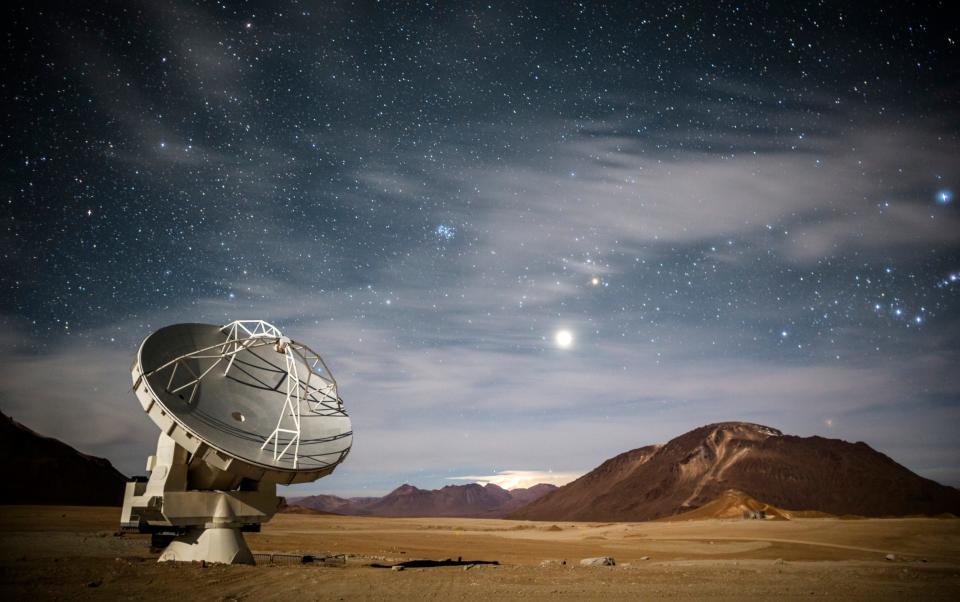
How to get there
British Airways operates non-stop flights from London Heathrow to Santiago four times a week. Domestic flights carry you onward to the Elqui Valley via the city of La Serena. Reaching the Atacama Desert requires a combination of flights and buses or private transfers via the city of Calama, 100km away.
When to go
Northern Chile is a year-round destination, but visit during the approaching winter months (May to August) for longer starry nights and fewer crowds. Shoulder season in April and October offers value for money but higher temperatures.
When to book
Tours of astronomical observatories like La Silla observatory in the Elqui Valley require registration in advance; local stargazing tours can sell out in winter, so it’s worth booking a few months ahead of time.
How much does it cost?
The biggest expense for this trip is airfare; once on the ground, costs are relatively affordable. Many observatory visits are free of charge (advance booking required) and local stargazing tours in the Atacama Desert range from £30 for a basic tour to £240 for a private tour including dinner under the stars.
The best package
iTravel offers a nine night stargazing tour (+49 221 534109-300; itravel.com) from £3,436pp including astronomical observatories in the Elqui Valley, stargazing in the Atacama Desert plus added wine tasting in the Colchagua Valley and a tour of Santiago. True astronomy buffs may want to spring for a New Scientist tour (0203 3089 917; newscientist.com). The 12-day trip costs from £7,999pp and focuses on telescopes and astronomy science; it is usually led by one of the magazine’s astronomy editors.
New Zealand
New Zealand is home to a growing group of IDSPs, including one of the biggest Dark Sky Reserves in the world: Aoraki Mackenzie International Dark Sky Reserve covering 4,367 sq km (1,686 sq mi) of the South Island. Here, unpolluted dark skies give views of southern hemisphere constellations such as Crux and the Magellanic Clouds, which aren’t visible from the UK. There is also a rich Māori astronomical heritage, dark sky hot pools, wine tastings under the stars and night hikes, as well as chances to spot the aurora australis (southern lights) and the elusive national bird, the nocturnal Kiwi.
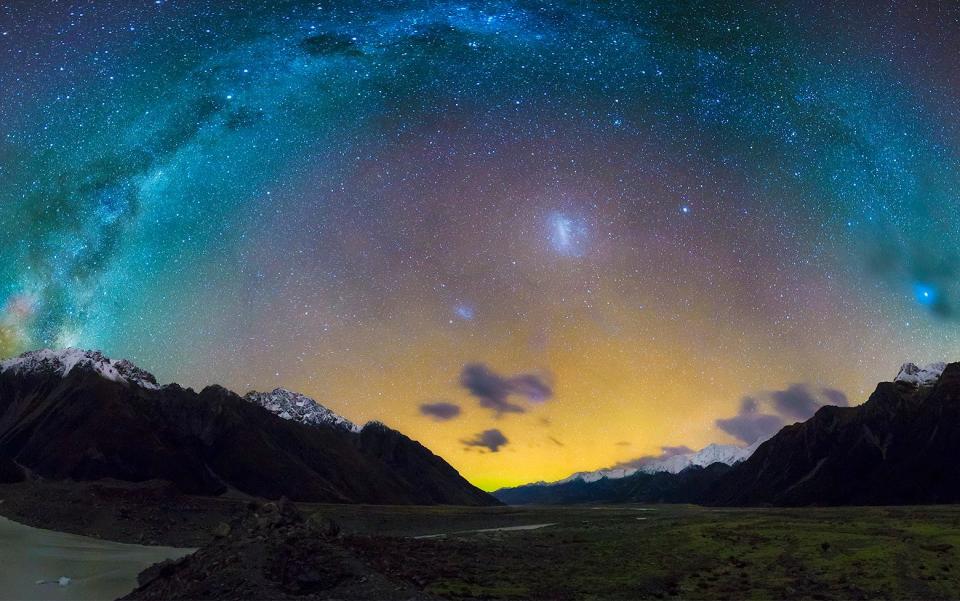
How to get there
There are no non-stop flights between the UK and New Zealand. The best options are to fly through Singapore (singaporeair.com), Dubai (emirates.com) or Hong Kong (cathaypacific.com) into the capital, Auckland. You can then catch an onward flight to Christchurch and hire a car to reach the village of Lake Tekapo at the heart of Aoraki Mackenzie.
When to go
It’s possible to see the stars here in any season, even in high summer when the nights are shorter. Winter’s long nights from March to September are best for seeing both stars and the southern lights, and flights are usually cheaper then.
When to book
Book several months in advance to find the best deals on flights. Tours at Aoraki Mackenzie (darkskyreserve.org.nz) can be booked last minute.
How much does it cost?
Tours at Dark Sky Project (darkskyproject.co.nz), the visitor experience inside the Dark Sky Reserve, cost from £25pp; family deals are available.
The best package
No all-inclusive operators currently offer stargazing-specific packages, but this is an easy trip to organise yourself. Base yourself at Lake Tekapo where double rooms at Peppers Bluewater Resort Lake Tekapo (+64 3 360 1063; peppers.co.nz) cost from £121. You can sign up for stargazing with Dark Sky Project, Silver River Stargazing (silverriverstargazing.com) or Big Sky Stargazing (hermitage.co.nz), soak in the hot pools at Tekapo Star Gazing (tekapostargazing.co.nz), or visit Pūkaki Wine Cellar & Observatory (mackenzienz.com) for an evening of celestial wine tasting.
Namibia
The first and only IDSP on the African continent is the NamibRand Nature Reserve, under the vast skies of central Namibia. A dark sky trip here is all about combining the unique flora, fauna and ethereal desert landscapes into a stargazing safari. And the skies are really dark: the reserve restricts development to one bed per 1,000 hectares and a limit of 25 guest beds in any location, keeping artificial light at night to a minimum.
Most nighttime experiences are led by safari lodges, such as andBeyond’s ultra-luxe Sossusvlei Desert Lodge (andbeyond.com; double rooms from £485), which has stargazing evenings with an in-house astronomer on a pro Celestron telescope and rooms with stargazing skylights above the beds. Meanwhile, Kwessie Dunes Lodge (naturalselection.travel; double rooms from £388) has similar rooms and Agama Lodge (agamalodge.com; double rooms from £205) offers a sleep-out under the stars in a full bed. Most of the lodges can also arrange night safaris to spot nocturnal wildlife in the desert.
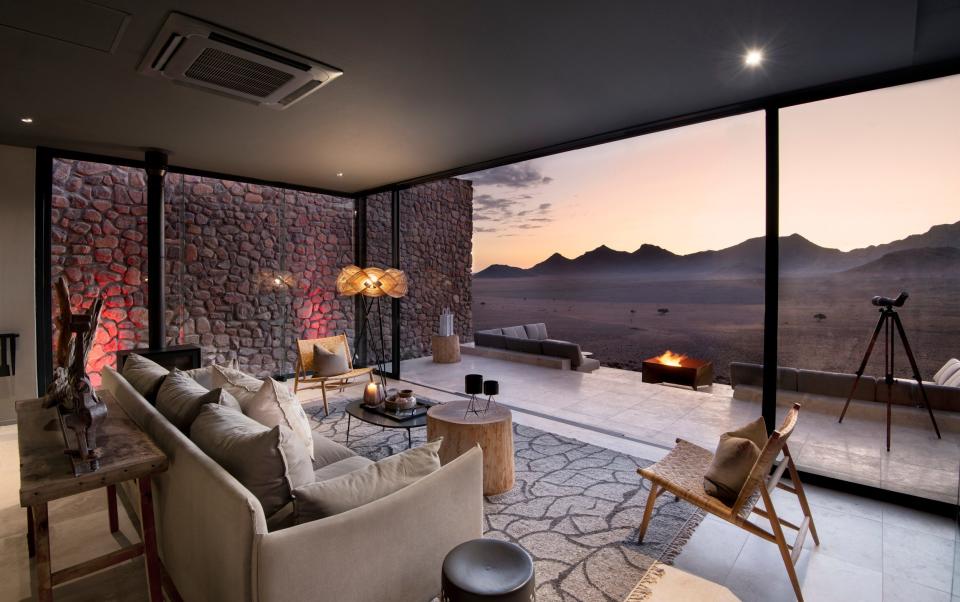
How to get there
There are no non-stop flights from the UK to Namibia’s capital city, Windhoek. The most direct option is to fly from London, Manchester, Birmingham or Glasgow on Lufthansa (lufthansa.com) with a stop in Frankfurt, or fly through Cape Town (virginatlantic.com). Most of the lodges can arrange transport from Windhoek; otherwise, it’s easy to self-drive.
When to go
The dry season from May to November offers the best conditions for stargazing with clear skies and more active winter wildlife. Cheaper flights can be found in January and February.
When to book
Given the limited nature of development inside the reserve, it’s best to book as early as possible – at least several months in advance – to secure a room.
How much does it cost?
Both flights and accommodation packages can be big outlays for this once-in-a-lifetime trip, made worthwhile by the quality of the starry skies and nocturnal wildlife experiences. Costs can be cut down by opting for a self-drive tour from Windhoek and booking self-catering accommodation. Note that prices for both flights and lodges tend to go down in the green season from December to April.
The best package
Naturetrek’s 14-day Namibia Night and Day package (01962 733051; naturetrek.co.uk) costs from £6,995pp including international flights, guided stargazing experiences and classic wildlife watching, as well as visits to the iconic dunes of Sossusvlei.
Britain and Ireland
With dozens of certified IDSPs, including Europe’s first Dark Sky Sanctuary at Ynys Enlli (Bardsey Island) in Wales, the UK and Ireland are havens for dark sky travel. These IDSPs make experiencing the natural night closer to home much easier, so long as you have patience with the weather and remember that clouds and rain are also a natural and beautiful part of the nighttime environment.
Night sky beginners should aim for guided visitor experiences, such as the world-class Kielder Observatory in Northumberland and OM Dark Sky Park and Observatory in Northern Ireland. Many of the national parks, such as Exmoor and South Downs, have detailed websites with stargazing locations, festivals and events. Meanwhile, Mayo Dark Skies Festival in Ireland is a week-long celebration of stargazing, night hikes, music and poetry held in November.
Check out DarkSky UK (darksky.uk) and Dark Sky Ireland (darksky.ie) for information on all of the reserves and parks, as well as the rich and ancient night sky heritage, which includes stone circles and druid sites aligned with the stars.
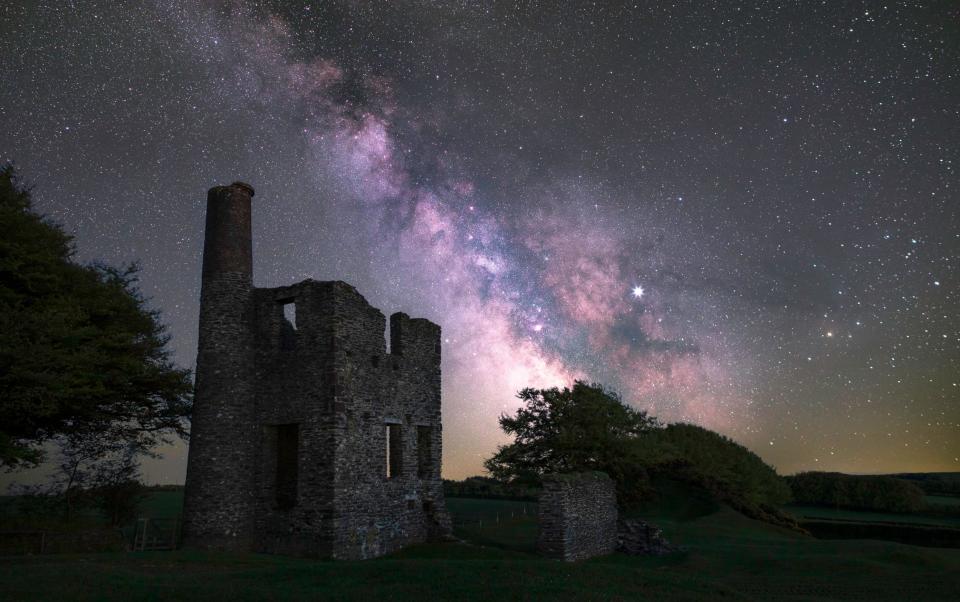
How to get there
Most of the UK’s IDSPs are in fairly remote locations that require driving or bus transfers, but a few – such as The Grand York’s one-night stargazing experience in the North York Moors (thegrandyork.co.uk; from £208pp) – are accessible by train. The closest airport to Mayo Dark Sky Park in Ireland is Knock. You’ll need a car once there.
When to go
Autumn and winter are the best times for dark skies and aurora-spotting thanks to the longer nights; many IDSPs hold dark sky festivals in October, January or February.
When to book
Certain experiences should be booked in advance, but generally, these trips are easy to do at short notice and are often better with less planning so you can assess the weather conditions.
How much does it cost?
The biggest expenses are transport and accommodation, but there are options for all budgets, including many beautiful self-catering options in rural settings, which often have big discounts in winter.
The best packages
Go Stargazing (gostargazing.co.uk) is an excellent resource for locations and dark sky events, including dark sky festivals, stargazing evenings, tour guides and more. Cool Places (coolplaces.co.uk) has a comprehensive collection of self-catering accommodation options based specifically around dark skies.
Terra Firma Ireland (terrafirmaireland.com) is a social enterprise that offers single tours (from £17) and multi-day packages (seven days from £1,194) including dark sky itineraries in County Mayo, with activities like guided night hikes and traditional myth and storytelling evenings.
Insider tips
These five destinations get top marks for their abundance of nighttime activities, but there are IDSPs all over the world. You can visit DarkSky’s website (darksky.org) to find out more about them.
When spending time outside at night, the human eye needs at least 20 minutes to adjust to dark vision. Be sure to keep screens and light sources off and you’ll notice how many more stars you can see.
For safari experiences in the UK, Wild Intrigue (wildintrigue.co.uk) in Northumberland offers a variety of quirky nocturnal wildlife safaris, such as bat-spotting and pizza nights, osprey cruises and dawn chorus discos.
One unsung destination is the Isle of Man (visitisleofman.com), which has more local Dark Sky Discovery Sites than anywhere else.
Doing it on a budget
If you’re on a budget, it’s best to stay close to home with the UK and Ireland offering some of the best dark sky sites in the world. Opt for low-key, self-catering accommodation or bunkhouses near dark sky parks. YHA The Sill at Hadrian’s Wall (yha.org.uk) is a good option with beds in shared rooms for as little as £13 per night. Next door you’ll find The Twice Brewed Inn (twicebrewedinn.co.uk), where there’s an observatory and planetarium with regular guided stargazing events.

What to pack
Red-light headlamp – red wavelength light keeps your eyes adjusted to the dark.
Binoculars – any standard pair of binoculars can help you see objects in more detail, like the dark spots on the Moon and the moons of Jupiter.
Stargazing apps – SkyView and SkySafari are augmented reality apps that allow you to hold your phone to the sky to find out which stars and constellations you’re seeing.
Star chart/star wheel – it can be fun for the whole family to learn to use an old-school spinning paper star chart – a lost art!
Know before you go
Plan your trip according to the astronomical calendar. Light from a full moon can wash out some of the stars, but it’s a great time for viewing physical features on the moon, like craters. You can also plan your trip around annual astronomical events, such as meteor showers, but book early as venues often fill up during these events.